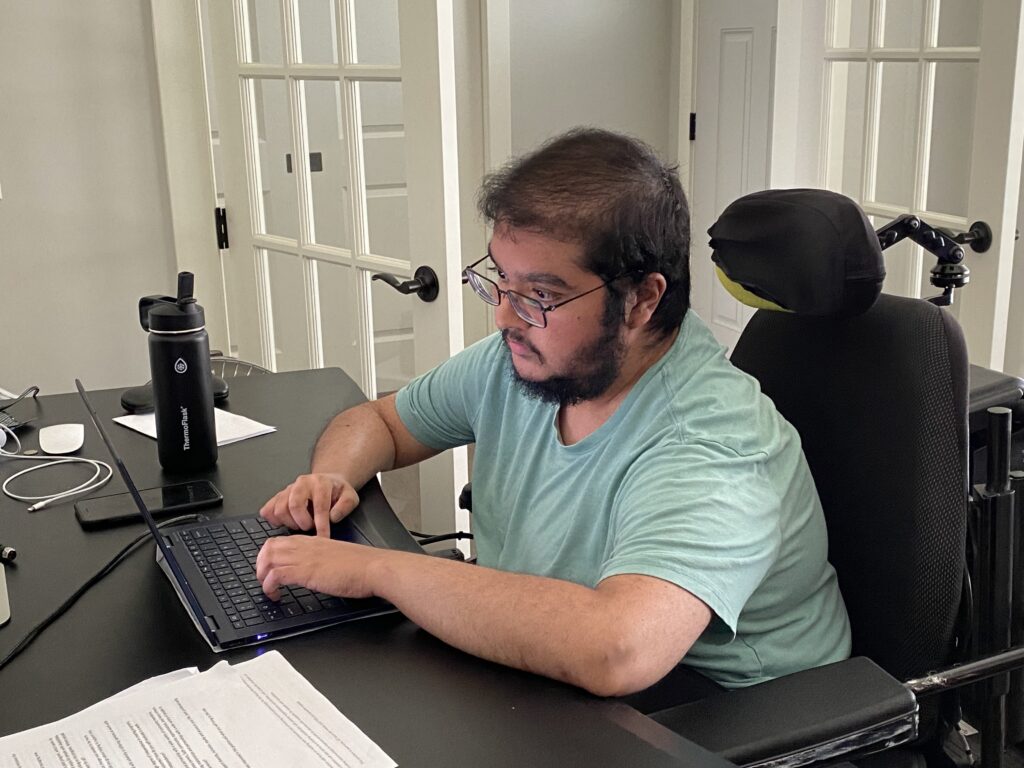 Working on the barriers to employment blog post series has been an eye-opening experience for me. Over the past few months, I have conducted extensive research, shared my personal experiences, and have included the perspectives of self-advocates and policy experts.
Working on the barriers to employment blog post series has been an eye-opening experience for me. Over the past few months, I have conducted extensive research, shared my personal experiences, and have included the perspectives of self-advocates and policy experts.
While progress continues to be made, there is much more that needs to be done to promote competitive integrated employment. Doing so will bring the state of Minnesota closer to truly championing disability inclusion.
This is the last in a series of seven blog posts.
- An Overview
- A Lack of Information about Supports
- Stereotypes and Denying Accommodations
- A Lack of Accessible Transportation
- Support Programs that Discourage Work
- A Lack of Legal Supports
- Conclusions
What Are the Barriers to Employment?
Let’s recap the barriers we’ve explored in this series. I focused on five that people with disabilities routinely face in employment:
- A Lack of Information about Supports
- Stereotypes and Denying Accommodations
- A Lack of Accessible Transportation
- Support Programs that Discourage Work
- A Lack of Legal Supports
These barriers often intersect and compound, creating a complex web of challenges for people with disabilities seeking employment.
Key Takeaways
I found several important takeaways writing this series:
- Lack of awareness: Many people with disabilities are unaware of the services that exist to pursue competitive employment opportunities. When case managers and service providers are uninformed, people with disabilities are often pushed into noncompetitive work. When people mistakenly believe their benefits depend on it, they often stay there.
- Persistent bias: There is still a lot of inherent bias towards people with disabilities. Employers continue to believe that people with disabilities cannot be productive and are reluctant to provide reasonable accommodations. Many of the people I interviewed discussed how these negative assumptions prevented them from maintaining competitive employment.
- Intersecting challenges: There are many challenges that people with disabilities face in healthcare and transportation which intersect with employment. Unfortunately, they are unable to access reliable transportation to get to and from work. They are often penalized for their earnings under programs like Medical Assistance for Employed Persons with Disabilities (MA-EPD).
- Legal hurdles: People with disabilities often struggle to access legal services to address employment discrimination. The burden often falls on them to spend time, energy, and money defending their rights. Legal institutions lack the capacity to take on every case, leaving many without recourse.
Looking Ahead
Despite the challenges that remain, I am still hopeful that Minnesota is addressing these barriers to employment. Advocates at MCD and other disability organizations are developing several strategies to increase the number of people with disabilities who are in competitive integrated employment. These strategies include:
- Educating people with disabilities, case managers, and employment providers about the services available to achieve competitive integrated employment.
- Providing disability inclusion trainings so employers understand the value that people with disabilities bring to the workforce. This would also combat stereotypes and encourage reasonable accommodations.
- Funding for legal institutions in Minnesota to address case backlogs and improve access to legal support.
- Eliminating penalties in support programs like MA-EPD, reducing disincentives to work.
- Funding to improve transportation reimbursement rates and improve Metro Mobility.
- Requiring transportation network companies to provide wheelchair-accessible services.
- Ending the subminimum wage and promoting fair compensation for all workers.
Call to Action
As we look to 2025, we all can do more to break down these barriers to employment—advocates, lawmakers, and employers alike.
- Advocates: continue sharing your concerns and educate others about the barriers people with disabilities face.
- Lawmakers: bring forth and support policies that support competitive employment.
- Employers: commit to inclusive hiring practices and providing reasonable accommodations.
Let’s create a more inclusive workforce where everyone has the opportunity to contribute their skills and talents.